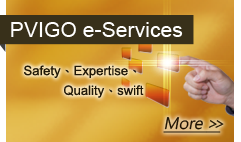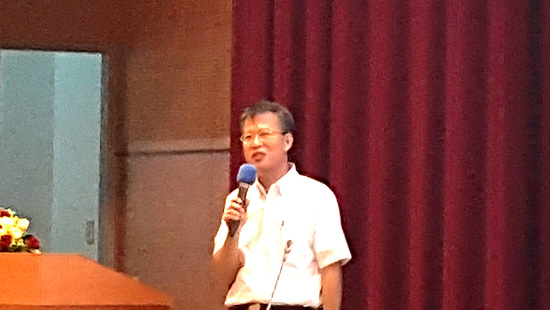
Yan Chun-jen at a Fintech Conference in Taipei; Photo credit: Conor Stuart
Yan Chun-jen, an examiner of the Taiwan Intellectual Property Office, gave a talk at a recent FinTech patent conference at National Taiwan University, in order to give some feedback to applicants on how business method and software patents are examined in Taiwan.
He made reference to several areas where patent applicants often trip up. One being Article 21 of the Patent Act, which defines a patentable invention as “the creation of technical ideas, utilizing the laws of nature.”
He says that applicants may receive feedback stating that their invention does not make use of hardware or software, or that it although the applicant has made use of software or hardware, it’s only used in place of human labor, which constitutes simple use of computers, and fails due to a lack of a technical aspect.
Another stumbling block for inventors or applicants is an office action stating that one of their claims does not assist in the technical aspect of their idea.
In Taiwan, software patents do not have to solve technical problems. However, Europe has a more flexible view of what constitutes “technical”, as they only require that a technical component is added, whereas Taiwan is stricter, more similar to the current US regulations, in that the software or hardware component has to be core to the technology and to its efficiency.
In Taiwan, a non-technical aspect includes:
- If it can be replaced with human activity
- If it makes use of ordinary software or hardware
- If it only replaces human activity
- If the efficiency produced is that of the average computer software or hardware functionality.
- If it does not use natural principles
- If it is not technical thinking
- Only displaying information
- Simple use of computers
In Taiwan a technical aspect must include the following:
- The method for resolving the problem must involves a technical method relating to the field in question
- Has to involve hardware or software
- Unique software or hardware
- Overcoming a problem
- Can replace intelligent human activity
- Resolves a technical problem
- Improves the technology
- Creates a new function
Yan gave a few examples to illustrate how these standards work in practice:
Conforming to the definition of a patentable invention
Case Study 1:
Invention summary:
- A way of giving out loyalty points
- Problem to be resolved: Normal ways of collecting loyalty points (collecting marks, stickers on a piece of card) are paper-based, with a small area which makes them easy to lose, and at the same time the stickers or collectible marks are a hassle for the shop manager to deal with.
- Technical method: Use digital data to replace the traditional paper cards, with a distribution system including a server, server data links and terminal authentication devices.
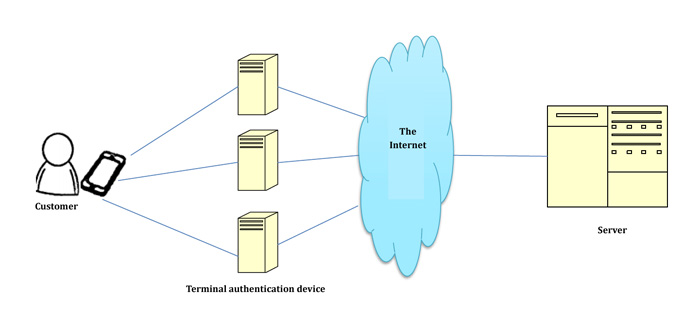
Figure 1: Case Study 1 drawing; Source: TIPO, Yan Chun-jen; Translated by Conor Stuart
Claims:
A loyalty point distribution system, with steps comprising:
- Producing loyalty points associated with promotions, and saving these on the first storage component;
- When it has been confirmed that the customer has satisfied the conditions of the loyalty point promotion, the terminal authentication device will request loyalty points from the server;
- The server on receiving the request from the terminal authentication device will check the first storage component and will randomly select loyalty points from the unused loyalty points, then mark these loyalty points as already in use;
- Through the terminal authentication device and the mobile end device authority over the loyalty points is conferred to the consumer.
In examining whether the patent is eligible under the definition of patentable inventions, the following the steps are followed:
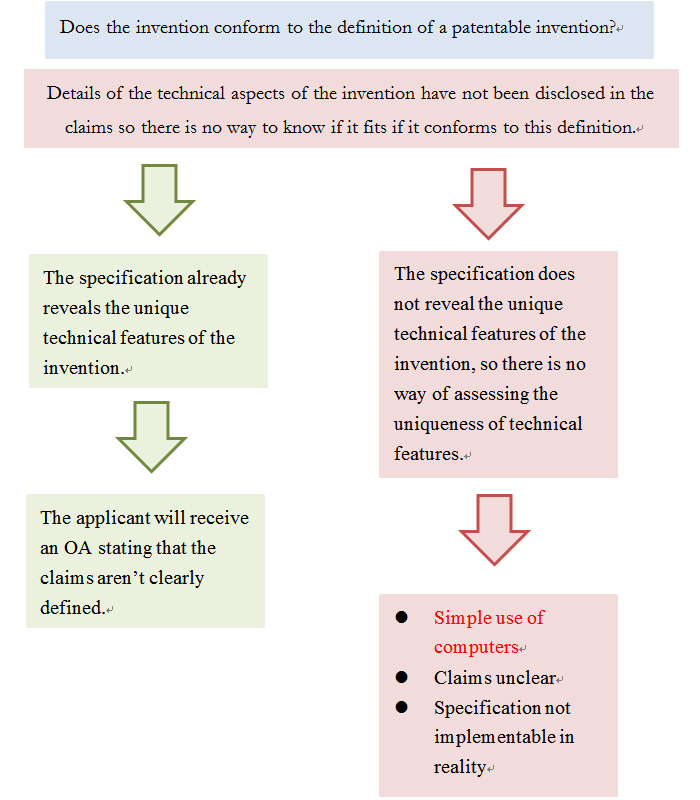
Figure 2 Examination flowchart for patentable inventions; Source: TIPO, Yan Chun-jen; Translated by Conor Stuart
Case Study 2:
Summary of Invention:
- A flexible method of buying game credits
- Problem to be resolved: Current cards, such as game credit cards and pre-pay phone cards are all produced with a fixed balance, so if you want to buy credits you have to choose between a range of pre-set balances, which leads to waste. This also leads to suppliers having to manufacture these cards and store them.
- Technical method: Consumers can enter a flexible value in credits that they want to purchase, and a top-up code is produced through a logistics server, the top-up code is then authenticated to assess if it is unique, then a management serial number is produced, and together they are sent to the management database, and the consumer after accessing the top-up code can log in to a service interface to get the points.

Figure 3: Case Study 2 Drawing; Source: TIPO, Yan Chun-jen; Translated by Conor Stuart
Claims:
- A flexible method of buying game credits, comprising:
Entering the name of a game into an electronic device channel; entering an amount decided by the consumer into the electronic device; linking the electronic device to a logistics server; confirming the name of the game and the amount as entered by the consumer, whereon the logistics server will produce a top-up code and send this back to the electronic device, and the logistics server will also send the top-up code to an authentication server, to confirm that it is unique; After authentication of the top-up number, a management serial number will be produced, and both the management serial number and the top-up number will be sent to the management database, which is, in turn, linked to the supplier’s services server. The services server also provides the service interface; using a printer connected to the electronic device, the top-up code is printed for the consumer.
Yan stated that in this case study, the technical aspect is not replaceable and is unique and therefore passes the definition of a patentable invention, going beyond normal commercial business practices.
Examination of Inventive Step:
In the inventive step examination the different aspects of the invention are examined to assess if they constitute a technical feature:
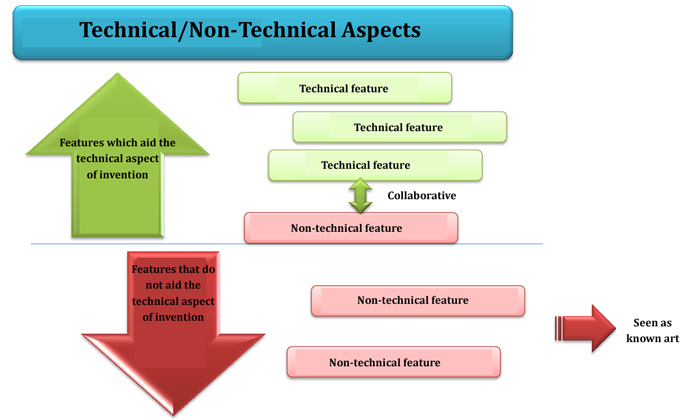
Figure 4: Technical/Non-technical aspects of an invention; Source: TIPO, Yan Chun-jen
Case Study 3:
An online transaction system, comprising:
A website server wherein many products are listed on the webpage to allow customers to shop online; a transaction server, which allows customers to make requests to purchase, and after receiving online payment contacts the logistics server to schedule delivery;
Customers enjoy a discretionary period within which they can return or exchange products if they are unsatisfied with them.

Figure 5: Case Study 3 Drawing; Source: TIPO, Yan Chun-jen; Translated by Conor Stuart
Prior art citation:
A kind of online shopping system, comprising: a primary server providing a webpage featuring products; a second server which deals with selected purchases and receives online payment, and after confirming payment requests a third server to schedule delivery.
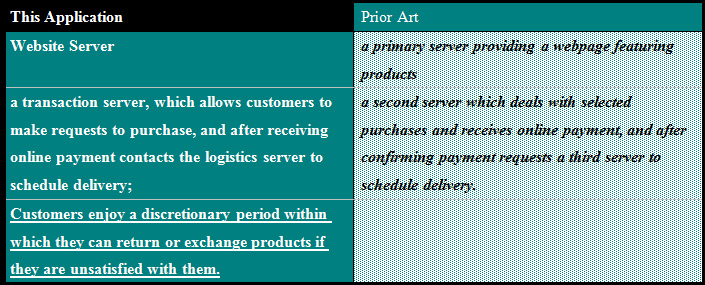
In this case, the only aspect of the invention that is not mentioned in the prior art citation does not aid the technical aspect of the invention and therefore the invention would not be considered to be taking an inventive step.
Case Study 4:
A method of combining purchase orders applied to an internet shopping platform, comprising:
a consumer buying at least one product from at least two shopping sites on a shopping platform and proceeding to the online checkout, creating at least two purchase orders, those purchase orders are sent to the shopping platform’s server; the consumer chooses to combine the orders on the combine orders module, and the combine orders module automatically combines the orders with a optimizing order combination module, and creates an order combination map, sending this to the shopping platform’s server via the internet; The optimizing order combination module uses an electronic map to calculate the distance the products have to be shipped and extracts the weight and cost of the items to be shipped from the product database, and extracts customer rating points from the customer rating database, and on this basis calculates the lowest amount of money for which the customer can get free shipping;
If, after combining the orders, the total amount due is over the lowest amount of money for which the customer can get free shipping, the products are shipped for free.

Figure 6: Case Study 4; Source: TIPO, Yan Chun-jen; Translated by Conor Stuart
If the section in italics is the improvement on prior art, then in this case it would be found to aid the technical aspect of the invention.
 |
|
| Author: |
Conor Stuart |
| Current Post: |
Senior Editor, IP Observer |
| Education: |
MA Taiwanese Literature, National Taiwan University
BA Chinese and Spanish, Leeds University, UK |
| Experience: |
Translator/Editor, Want China Times
Editor, Erenlai Magazine |
|
|
|
| Facebook |
|
Follow the IP Observer on our FB Page |
|
|
|
|
|
|


